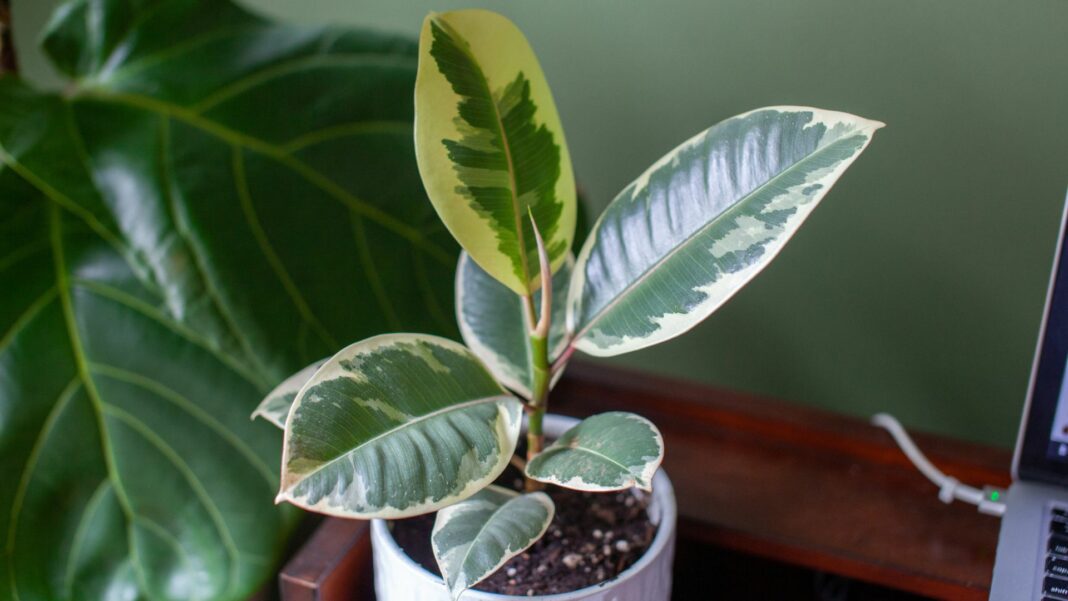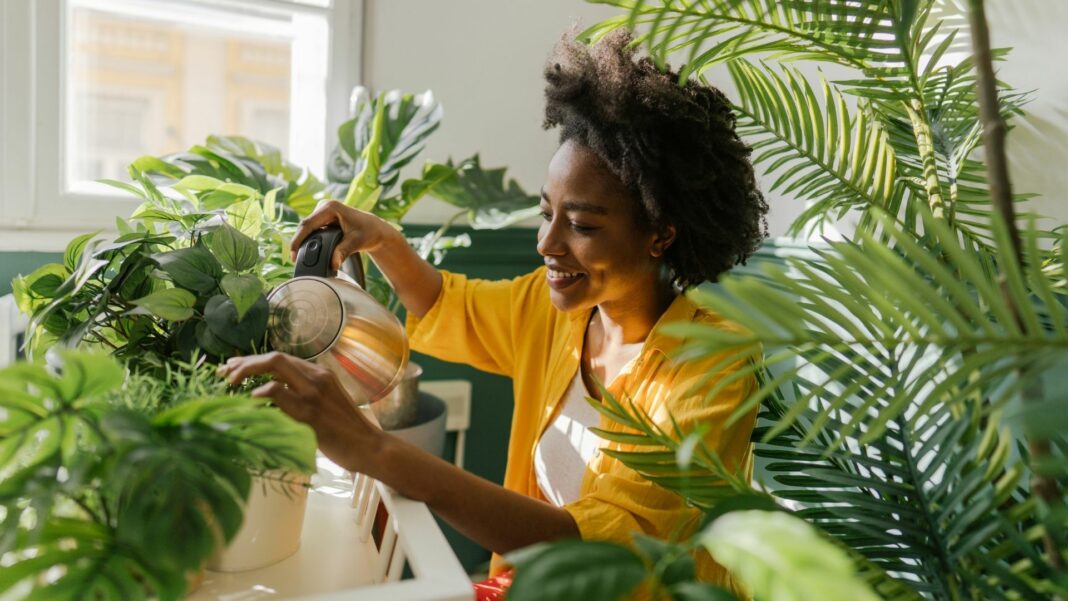
Plants breathe new life into any home or apartment, and plenty of plant species thrive indoors. When you’re creating a harmonious green space in your current unit or decorating a brand new place, here are our top selections of the best indoor plants for apartments.
Low-maintenance plants
Kitchen herbs
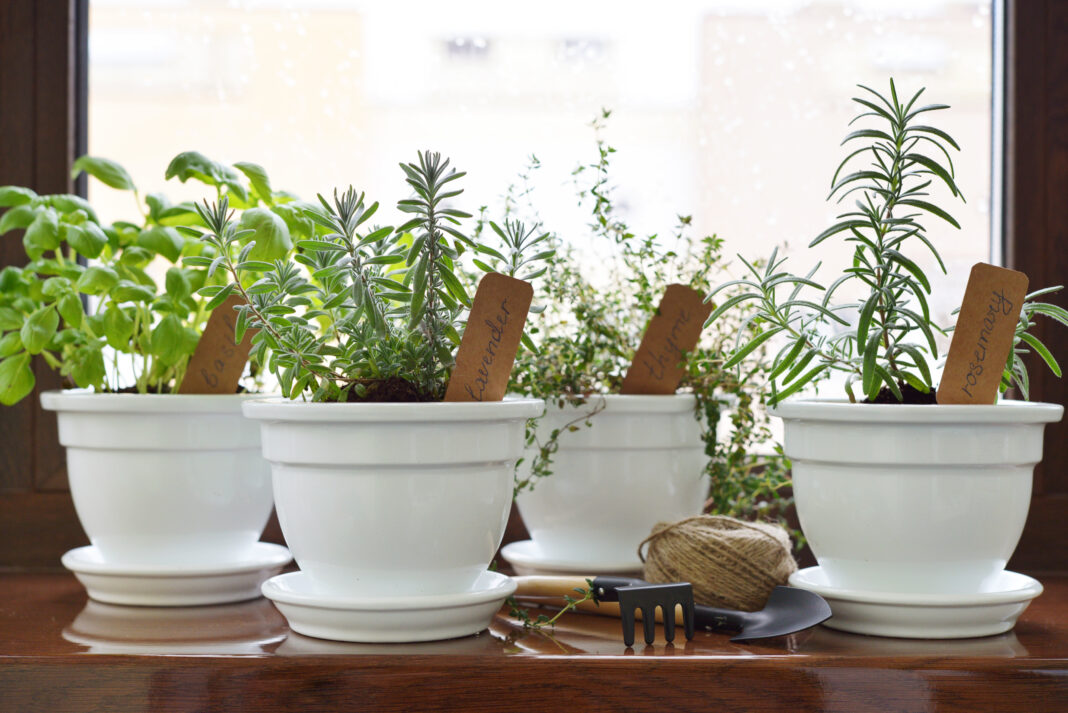
Tired of spending $5 whenever a recipe calls for fresh basil? Try growing your own herbs. Herb kits are a great way to bring some greenery into your home while getting something in return. Most kits come with basil, parsley, and mint seeds, while others include more exotic options like lavender and rosemary. Many herb kits are self-watering, making caring for these plants less overwhelming than others. They also usually group herbs based on their need for sunlight. Many herbs like at least six hours of direct sun, so they’re perfect for windowsills.
Aloe vera
Ever had a terrible sunburn or gotten a small cut that just wouldn’t heal? An aloe vera plant might have been the solution. The gel from aloe vera plants is a natural remedy for second-degree burns and small wounds. The benefits of having an aloe vera plant in your home overshadow its tendency to attract pests if taken outside. Since they’re succulents, you only need to water them every few weeks, letting the soil dry out before you soak it again. They like between six to eight hours of sun, so keep them in a sunny spot.
Pothos
The pothos is one of the most forgiving plants you’ll find. As it’s normally found in tropical forests, it prefers bright indirect light, but it adapts well to less sun. In fact, it’s often called devil’s ivy because it’ll still grow in a virtually pitch-black room. It happily accepts an erratic watering schedule and won’t mind if you give it too much or too little water. Just make sure you let the soil dry out between waterings to prevent soggy roots. This hardy plant is also a stunner, with pretty heart-shaped leaves in colors from green to golden.
Paddle plant
The flat, round, pink-tipped leaves of the paddle plant make it a fun addition to any apartment. Succulents like the paddle plant are ideal for busy apartment dwellers as they’re almost impossible to kill. They prefer their soil a little dry, so it’s okay if you neglect them or leave the air conditioner running. Ideally water your paddle plant thoroughly when you bring it home, then let the top 2 inches of soil dry out before you water it again. They love bright light, so they often do well on windowsills.
String of pearls

Plants don’t get a lot quirkier than the spring of pearls. It’s named for the pearl-like leaves that cascade down from the pot as it grows. You might think such a unique plant takes a lot of work, but these succulents are very adaptable. They’re happy enough inside or outdoors and only need watering every week or two. Whether you’re decorating a room or balcony, choose a spot where your plant gets between six and eight hours of indirect sun. Drafts won’t kill your plant, but its leaves might drop if you place it near an open window or the AC.
Peperomia
The striking variegated leaves of the peperomia make it a stylish addition to any apartment. These plants are also drought tolerant, so they won’t mind if you forget to water them. They’ll hold water in their leaves and stems until you get around to it. Wait until the soil feels dry to the touch before giving them a small drink every one to two weeks. Overwatering may cause root rot, so go easy on the H2O. The peperomia doesn’t like the direct sun, but it can handle low to high levels of indirect light.
Mini jade plant
The jade plant also holds water in its leaves and stems, so it can survive a month of neglect without too much trouble. Once you water the soil, it’ll rehydrate and start growing again. Just make sure you wait until the soil dries out before watering. These succulents enjoy the direct sun of a windowsill, ideally facing south or west so the heat isn’t too intense. The mini variety usually won’t grow more than 30 inches tall, so they’re ideal for apartments. Ancient wisdom claims these plants bring good luck, so adding some to your pad can’t hurt.
Chinese money plant
With its name promising good fortune, the Chinese money plant is another great option if you need some luck in your life. While we can’t promise it’ll bring you riches, it will make your apartment look more stylish. Shade helps its pancake-shaped leaves grow large, but it can withstand the direct light of a windowsill during winter. Water it once a week and you’ll keep it happy. You can also replant offshoots from the base of the stem to create new plants.
Yucca
Yuccas thrive in the deserts of Mexico and South America, so you know they’re tough. They prefer bright spaces with indirect sun, although they’ll tolerate direct sun. You just might notice a little discoloration on their leaves. They love a drink every two to three days during warm seasons, but you can drop that back to every two to four weeks in the fall and winter. Growing 5 to 8 feet, they’re larger than many of the plants we’ve mentioned, so they can be a great focal point in any room.
Asparagus fern
Ferns are notoriously difficult, so you might be surprised that the asparagus fern makes our list. However, while it looks like a fern, it’s not a fern at all. It’s actually a lily, so it’ll handle a lot more abuse than a maidenhair. Water it enough to keep the soil moist, and it will thrive. They prefer a humid environment with plenty of indirect light, so your bathroom is the ideal choice. Asparagus ferns grow quickly, but you can keep yours in check by trimming it with scissors.
Plants that improve apartment air quality
Many plants can also help you breathe easier by filtering impurities from the air. If you’re concerned about chemicals from a new paint job or your cleaning products, these plants are great options:
Florist’s chrysanthemum
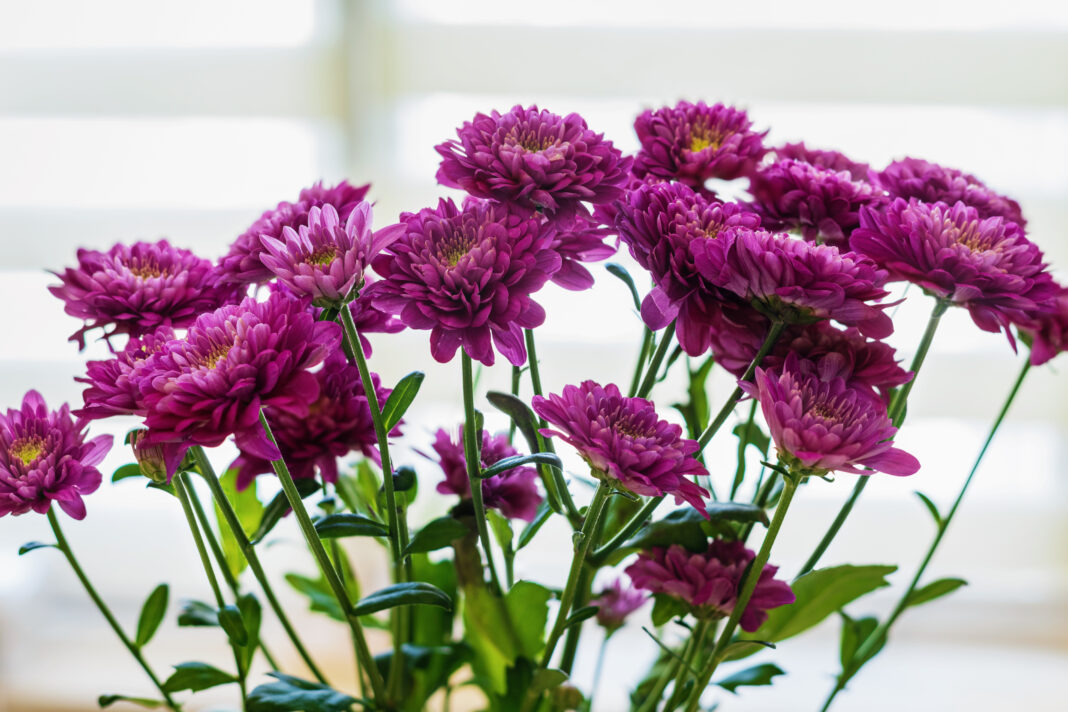
According to the NASA Clean Air Study, florist’s chrysanthemum removes benzene, formaldehyde, trichloroethylene, xylene, toluene, and ammonia from the air. It’s also fairly small and available in many flowering colors, so you can match it to your decor. Keep it somewhere it can receive good circulation and bright light and avoid excessive humidity. Try to keep the soil damp by watering it once or twice a week. This plant is toxic to cats and dogs, so keep it on a high shelf away from any furry friends.
Peace lily
One of the easiest indoor plants to grow, peace lilies are another plant with great air-cleaning benefits. They remove ammonia, benzene, formaldehyde, trichloroethylene, xylene, and toluene from the air. Peace lilies grow well in medium to low light in a pot with rocks and water underneath. They survive even if underwatered. Some people actually wait to water their peace lilies until they start drooping. Their beautiful, white flowers and forest green leaves make them the perfect house plants to spruce up any room.
Bamboo palm
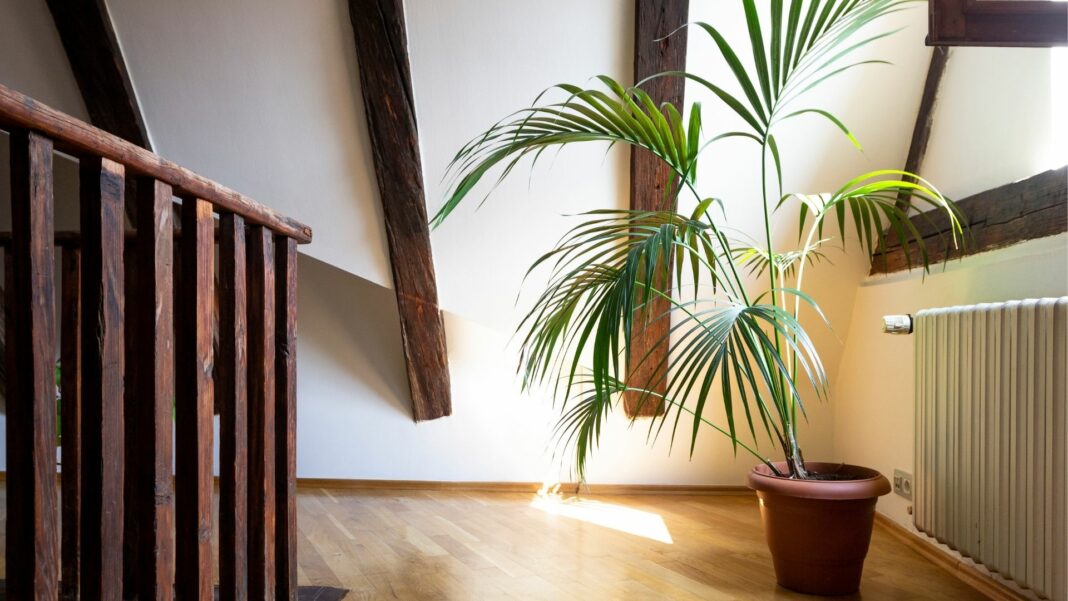
Need a beach vacation but can’t take one just yet? Consider getting a bamboo palm and bringing a bit of the tropics to your daily life. Aside from being visually appealing, a bamboo palm also removes xylene and toluene, benzene, trichloroethylene, and formaldehyde from the air. Keep your plant in a pot filled with nutrient-rich potting soil somewhere with low to medium light. Use room temperature water and be sure not to overwater, as bamboo palms like soil that’s moist but not wet. They can also survive a good amount of time in drier soil.
Flamingo lily
This beautifully vibrant plant flowers almost all year-round and its pink color adds a pop to indoor spaces. It grows well in semi-moist soil and with minimal sunlight, so even if your apartment doesn’t get great lighting, the flamingo lily will prevail. It also does some work on your indoor air pollutants, removing formaldehyde, xylene, toluene, and ammonia from your home. This low-maintenance plant will bring color to your space and, best of all, it does well even when you forget to water it daily. Aim to keep the roots slightly moist. Like other lilies, it is toxic to pets.
Philodendron
Most people love the philodendron’s pretty heart-shaped leaves. However, we think its talent for removing formaldehyde from the air is even more appealing. If you needed another reason to choose a philodendron, its easy-going nature should get you over the line. You can sit it anywhere with bright, indirect sunlight. Let the top inch of soil dry out between waterings. Your watering schedule depends on the time of year and the amount of sun your plant gets, but don’t stress too much. The droopy leaves will let you know when it needs a drink. They’ll recover quickly once you oblige.
Spider plant
They sound spooky, but unlike arachnids, spider plants are a welcome addition to any apartment. Their neon green variegated leaves can brighten up any unit and remove formaldehyde, xylene, and carbon monoxide from the atmosphere. They’re easy to keep anywhere in the country, too, as they’ve been known to survive in 2-degree temperatures. Just set your plant up in a spot with indirect sunlight and water it once a week. Check to make sure the soil is dry before giving it a drink, as overwatering can turn the leaves brown.
Snake plant
The snake plant is another indoor plant that’s not as terrifying as it sounds. These helpful succulents remove formaldehyde, xylene, trichloroethylene, and benzene from the atmosphere so you can breathe easier. They ask for very little in return. Just place them in a bright spot with direct or indirect sunlight for a couple of hours and resist the urge to overwater them. They only need a drink once every two weeks in warm months and once a month when it’s cold.
Rubber plant
A rubber plant is a versatile addition to any apartment. You can keep it compact in a small pot or choose a larger pot and let it grow into a small tree. The larger the rubber plant, the more effective it is at filtering toxins in the atmosphere. A rubber plant can remove xylene, formaldehyde, trichloroethylene, and benzene from the air. They’re happiest in bright spaces with indirect light. Water it once a week in the warmer months and once every two weeks when it’s cold.
English ivy
You might recognize English ivy as the climbing vine that grows on many buildings and walls. However, there are some key reasons to bring this beauty indoors. NASA says no plant is a better air purifier. They’ll collect formaldehyde and benzene from the air and look great doing it. You can grow English ivy in a small pot or a hanging basket. Choose a cool, sunny spot with indirect light and water them only when the soil feels dry to the touch. These plants thrive outdoors, so you know they don’t need a lot of TLC.
Pineapple plant
Unlike other plants on the list, pineapple plants don’t remove toxins from the atmosphere. Instead, they boost indoor air quality by producing oxygen. NASA claims the cleaner air pineapple plants create could help you sleep better and even eliminate snoring. If your partner keeps you awake, it might be worth a shot. As they’re tropical plants, pineapple plants love warm spaces with direct sunlight. Wait until the soil dries before watering them, but don’t stress too much. Overwatering is more likely to kill your pineapple plant than underwatering.
Traits of good plants for apartments
Good plants for apartments suit living in pots. They don’t drop leaves or require too much of their owners. Just a little water and perhaps some fertilizer should help them look their best. The best apartment plants enjoy living at temperatures that are comfortable for us. They’re also the right size for an apartment. They shouldn’t grow too large, and you can tame them by choosing the right pot or cutting back the leaves.
Tips for caring for plants in an apartment
Follow these tips to improve the longevity and look of your apartment plants:
- Understand what your plants need, as every species is different.
- Use a pot with drainage holes to prevent root rot, and place it on a saucer or inside another pot to protect the floor.
- Water them with room temperature water, as cold water can shock them.
- Supplement their diet with a controlled-release fertilizer in early spring and later summer.
- Spray with a natural insecticide soap if you notice pests attacking your plant.
- Repot your plants every two or three years to ensure their soil has enough nutrients.
Frequently asked questions
Caring for plants in an apartment is pretty simple. Find the right spot for them, water them as they need it, and they’ll do well. Indoor plant leaves can get a little dusty, but you can wipe the dust away with a damp cloth or soft brush. Adding a little fertilizer to your pots when your plants are growing most during spring and summer can help them stay healthy. Pruning your plants can also help them stay manageable in your apartment.
Plants that grow very tall or very wide, such as trees and hedge plants, are bad options for apartments, as they can quickly grow too large for your rooms. You may also want to reconsider plants with strong scents, as their smell can become more intense when they’re kept indoors. Toxic plants aren’t necessarily bad for apartments, but you may want to reconsider them if you have pets or babies. Knowing your plants can’t harm your loved ones can provide real peace of mind.
Several popular indoor plants are toxic to pets, including lilies, tulips, azaleas, and oleanders. It’s a good idea to check whether a plant is toxic to pets before bringing them into your apartment. You may decide to choose a different plant or place it up high so it’s out of reach.
An indoor plant can add vibrancy to any apartment or home, and the health benefits are an added bonus. If you’ve been searching for the best indoor plants for apartments, we hope you’ll consider our top choices. When you’re looking to change things up and get some new plants and a new place, check out all of our apartments for rent. You might just find a unit with a perfect, sunny shelf for your garden herbs

